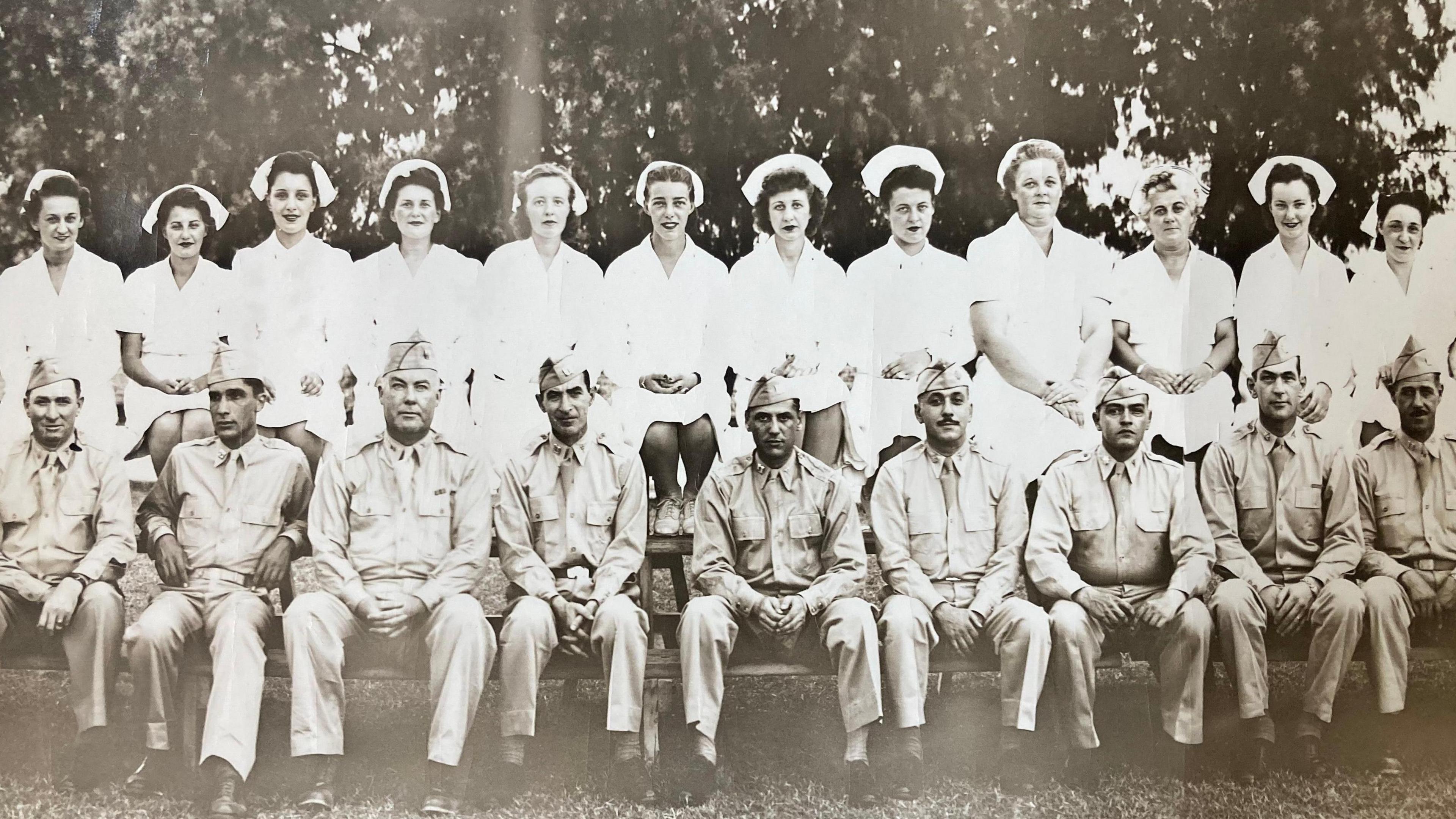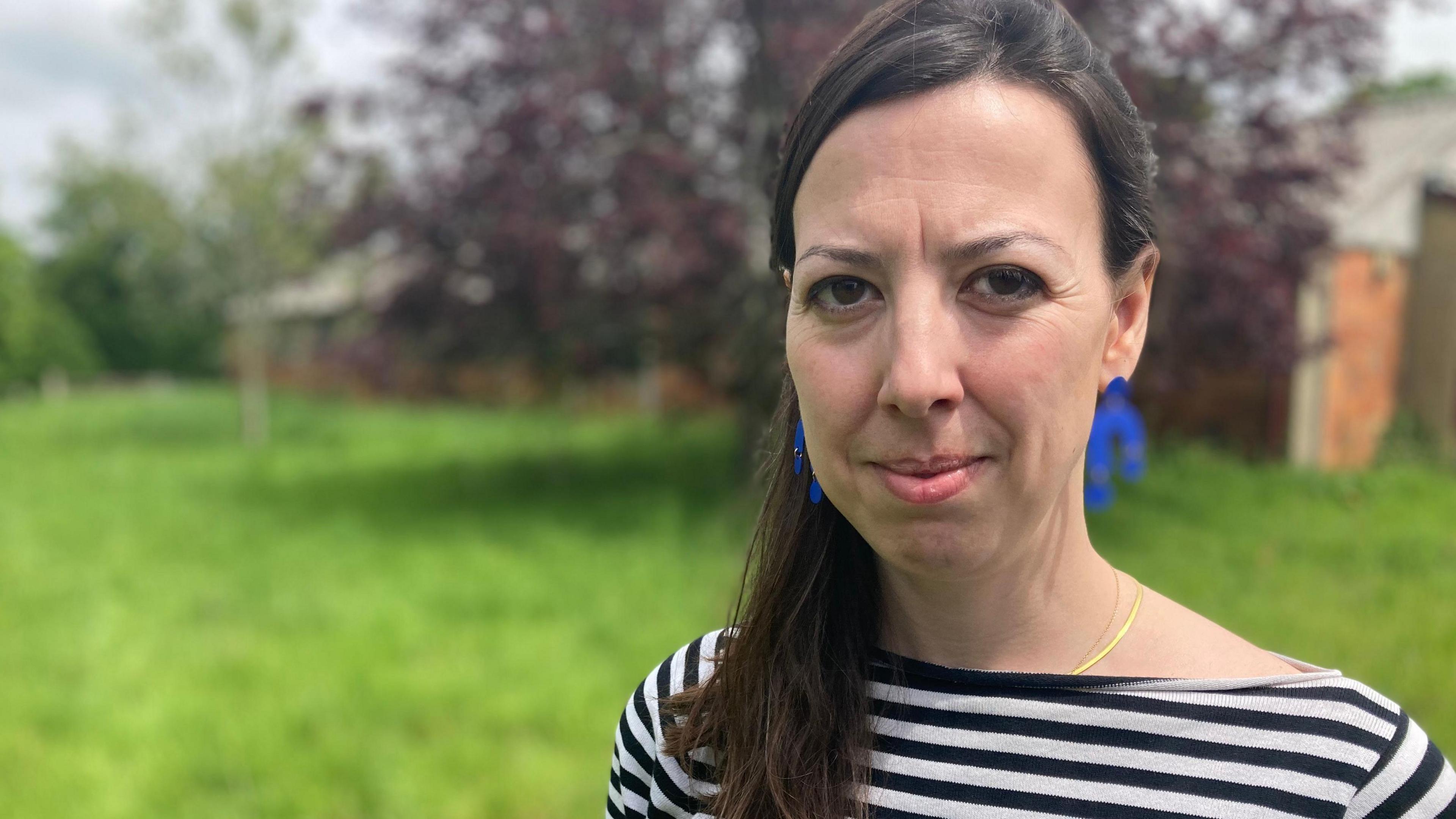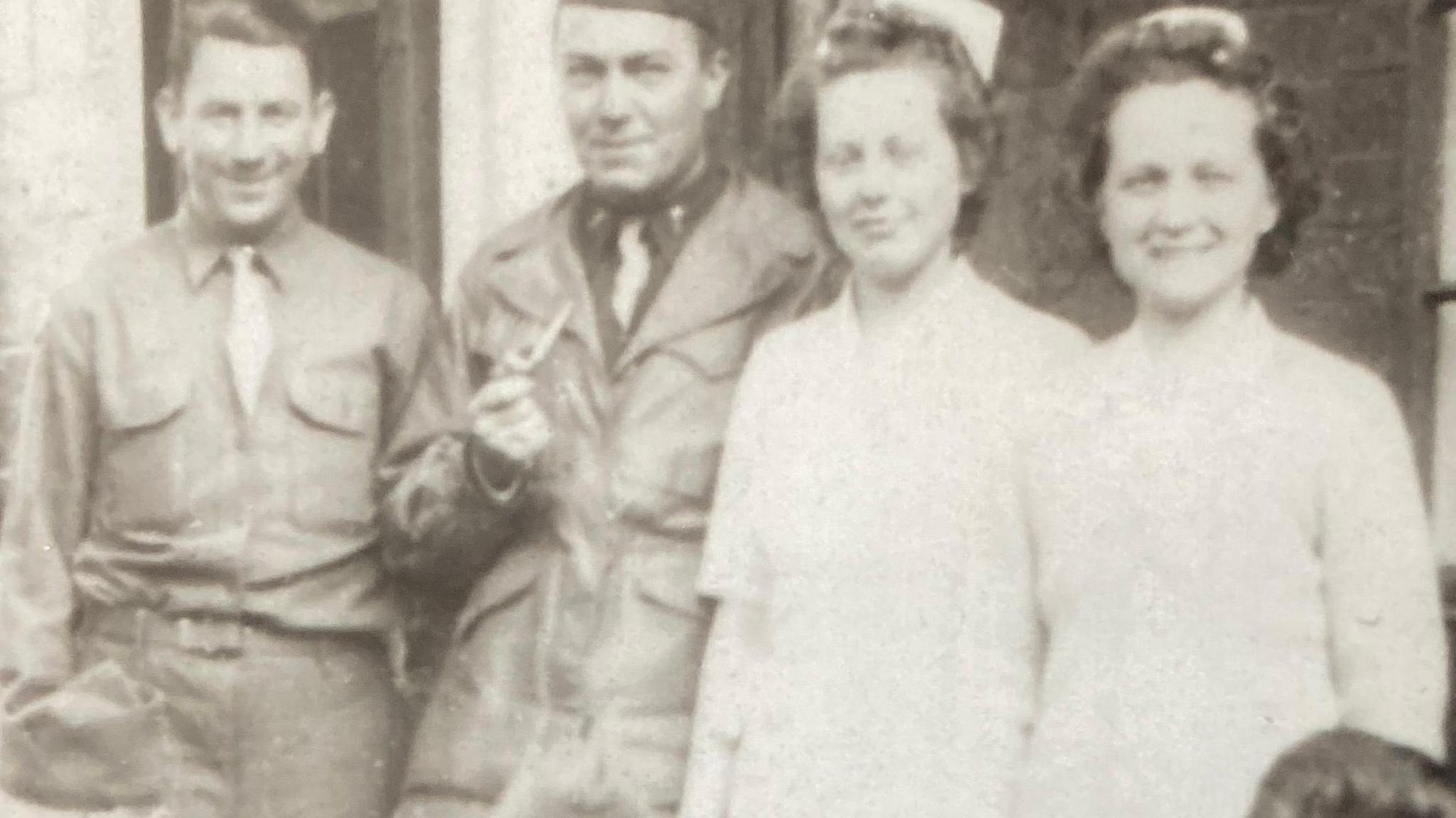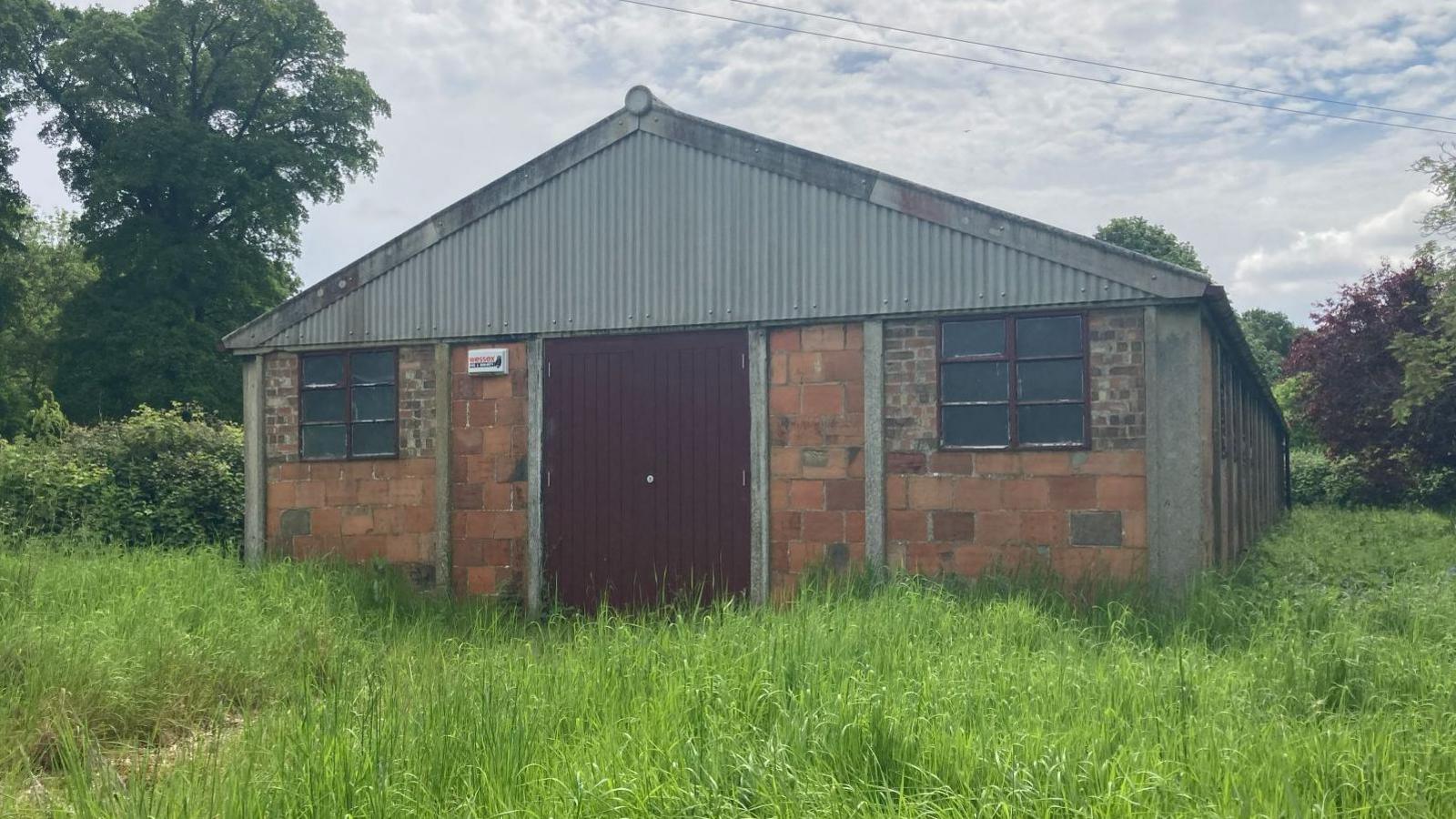Forgotten history of D-Day hospital

The hospital was run by the US Army
- Published
The story of a how a huge military hospital took shape in the grounds of a country house in Dorset has been largely forgotten.
The hospital was built in 1943 to 1944 to receive casualties from D-Day, using 70 acres of requisitioned land on the Kingston Lacy estate.
Few traces of it remain but, when it was operational, it was the size of a small town with 100 buildings, including wards, operating theatres, laboratories, a post office and even a cinema and dance hall.
When plans were drawn up for the Allied invasion of Europe, codenamed Operation Overlord, it was realised there was lack of adequate hospital space for the anticipated casualties.

Dr Elena Greer of the National Trust said the hospital was on a "vast scale"
Kingston Lacy is now owned by the National Trust and property curator Dr Elena Greer said in total 20,000 patients were treated at the facility, which was run by the US Army.
She said: "The casualties would arrive by train to Wimborne, 300 at a time. They would be transferred to Kingston Lacy by a fleet of ambulances.
"The facilities were the envy of other towns. I am bowled over that they managed to build everything so quickly."
Nurses raised soldiers' morale

Nurses received praise for raising solders' morale
More than 100 nurses who received commendations for their dedication at the hospital.
Dr Greer said: "Not only did they provide brilliant treatment but they were really important for the morale of the wounded soldiers.
"There is a report in which they are really praised, which says they are regarded by the soldiers as a 'shining example of American womanhood'."

A building from the time of World War Two still stands in the estate's grounds
Most of the buildings were demolished in 1958, in accordance with the terms of the agreement with Ralph Bankes - who owned Kingston Lacy at the time - that the site should be returned to parkland.
Only an isolation ward and ambulance shed remain.
"The hospital complex was on a vast scale," said Dr Greer, adding: "You wouldn’t believe it now, it’s so serene."
Follow BBC South on Facebook, external, X (Twitter), external, or Instagram, external. Send your story ideas to south.newsonline@bbc.co.uk, external or via WhatsApp on 0808 100 2240, external.